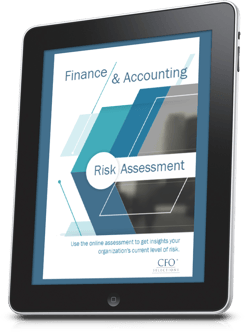
Recent sad news about the wildfires disaster in California which has destroyed homes, businesses and caused so many deaths is a reminder for us again to consider the future.
…up to 40% of businesses hit by natural or human-caused disasters never re-open.”
According to FEMA, the Federal Emergency Management Association, up to 40% of businesses hit by natural or human-caused disasters never re-open. They close because their normal processes are overwhelmed by loss: loss of data, inventory, space, personnel, or all of the above.
Chances are, tomorrow will be pretty much like today: Predictable, understandable, and safe. Your office will be there when you arrive. Your co-workers will make it too, more or less on time. Your computer will offer you a clear window on the world and bring you the day's news.
But once in a while, tomorrow is different. Earthquakes happen, fires start overnight, thieves find that door that never did quite latch, or -- name your disaster here.
So how do you make sure your business is one of the survivors?
Your business will survive by thinking about potential disasters before they happen, making a plan, and practicing to ensure your plan works.
Here is the critical list:
- Assign people to be responsible for the disaster plan
- List the main categories of events that could impact your business
- Check if there are laws or regulation that determine minimum standards of preparedness
- Assess risks and ways to reduce them
- Document your disaster plan - and make sure people can get to the plan outside the office
- Test the plan, and regularly update as needed
What should your disaster plan include?
Details and scope of a disaster plan will differ by business, but in general, all companies need to ensure they have a plan to reach employees, customers, and vendors, a place and supplies to conduct business, and access to critical data.
FEMA offers the following list of the things to consider while creating a disaster plan:
- Resource Management: Resources needed for responding to emergencies, continuing business operations and communicating during and after an incident should be identified and assessed.
- Emergency Response Plan: Develop plans to protect people, property and the environment. Plans should include evacuation, sheltering in place and lockdown as well as plans for other types of threats identified during the risk assessment.
- Crisis Communications Plan: A plan should be established to communicate with employees, customers, the news media, and stakeholders.
- Business Continuity Plan: Develop a business continuity plan that includes recovery strategies to overcome the disruption of business.
- Information Technology Plan: Develop a plan to recover computer hardware, connectivity, and electronic data to support critical business processes.
- Employee Assistance & Support: The business preparedness plan should encourage employees and their families to develop family preparedness plans. Plans should also be developed to support the needs of employees following an incident.
- Incident Management: An incident management system is needed to define responsibilities and coordinate activities before, during, and following an incident.
- Training: Persons with a defined role in the preparedness program should be trained to do their assigned tasks. Train all employees so they can take appropriate protective actions during an emergency.
Most tomorrows are just like today -- but if your business has a disaster plan, you can feel more confident that it can survive that one tomorrow that isn't.
You may be concerned about the future of your business. We have a large group of CFOs who can help you prepare. Contact us here to let us know of your interest.
About the Author
 Charlotte Morin is the business manager for CFO Selections, handling accounting, and IT. She brings a unique combination of skills in accounting, writing, organization, process development, and technology to the CFO Selections team.
Charlotte Morin is the business manager for CFO Selections, handling accounting, and IT. She brings a unique combination of skills in accounting, writing, organization, process development, and technology to the CFO Selections team.
She joined the company in 2008, following six years as co-owner and controller of an e-commerce company, eleven years as a systems analyst, and three years working to build an internet company from the ground up.





